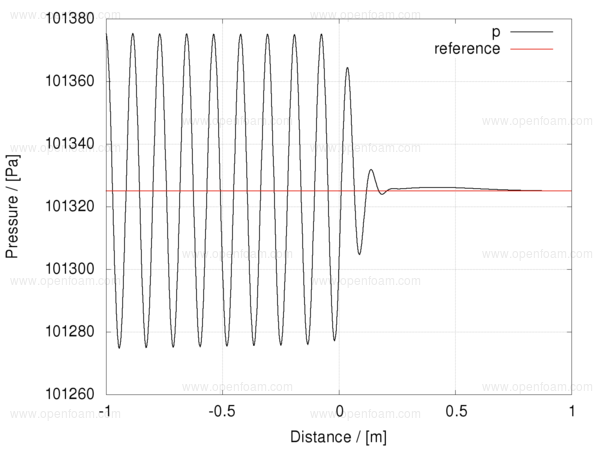This source can be used to damp spurious pressure waves for acoustic (compressible) analysis. It behaves like an acoustic sponge-zone, combining the theories of acoustic resistivity, porous resistance and inertial under-relaxation based on a reference solution taken from the far-field steady or mean flow.
This source will:
The following image shows how a uniform 1-D acoustic is damped using a cosine-ramping function within 2 to 3 wavelengths:

The user needs to input both a damping coefficient, targeting a frequency or frequency range, and a ramping distance based on characteristic wavelengths. Damping will be applied increasingly for those cells beyond radius1, and the damping will be maximum for those cells beyond radius2 (damping will be variable between radius1 and radius2). Although the user needs to input a target frequency and damping length, damping will be applied to all pressure waves, regardless of frequency. The length required to damp other frequencies will be different to the damping length input by the user.
The option is specified using:
acousticDampingSource
{
type acousticDampingSource;
active yes;
duration 1000.0;
selectionMod cellZone;
cellZone selectedCells;
centre (0 0 0);
radius1 0.1;
radius2 1.2;
frequency 3000;
URef UMean;
}
Tutorials
Source code
| Would you like to suggest an improvement to this page? | Create an issue |
Copyright © 2018 OpenCFD Ltd.